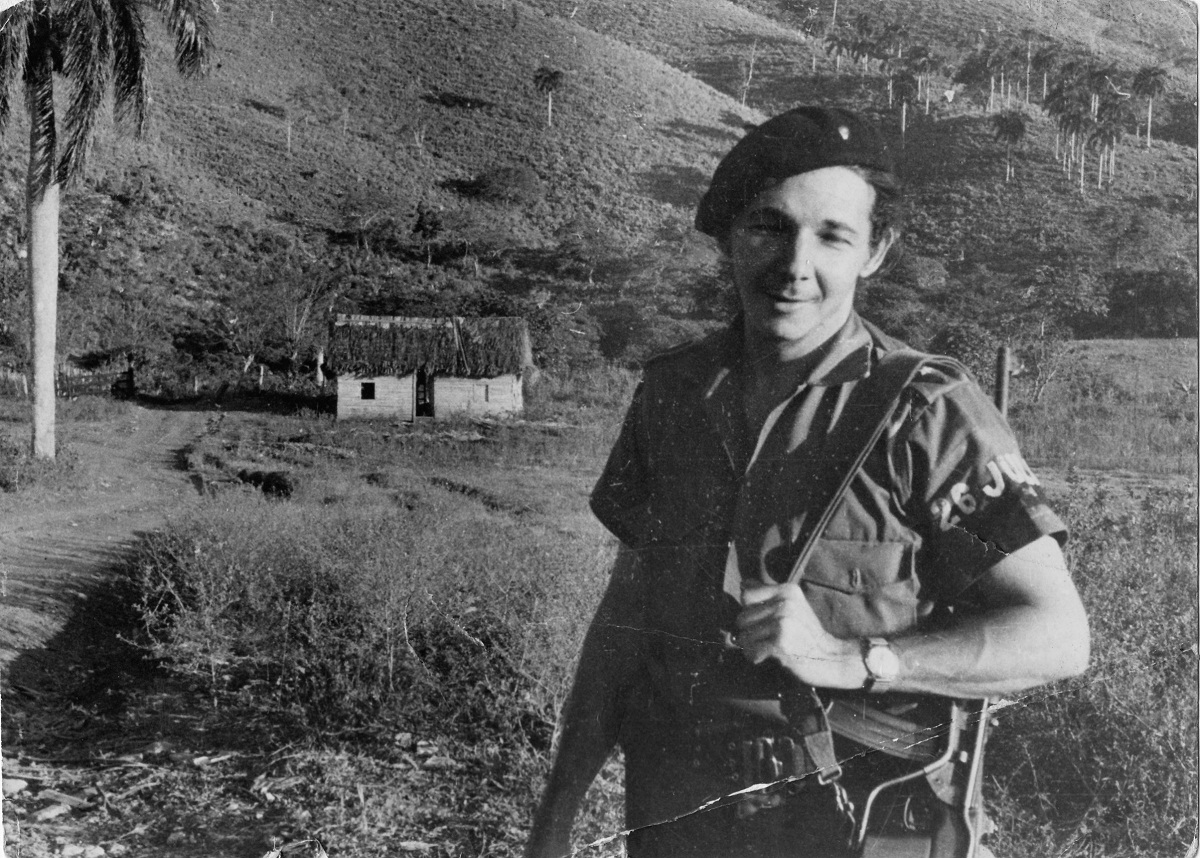
This June 3, Army General Raul Castro turns 94 years old, more than 60 of which he dedicated to the revolutionary cause of his homeland since his time as a university student in Havana, when he joined the Socialist Youth and participated in the first semester of 1953 in the Conference for the Rights of Youth held in Vienna, in the context of the preparation of the 4th World Festival of Youth and Students.
However, his revolutionary impetus would be far from being limited to political activism when a regime of opprobrium and terror had usurped power after Fulgencio Batista's military coup on March 10, 1952.
Raul would be very close to his path of revolutionary realization under the leadership of his brother Fidel, who at the head of the Generation of the Centenary of the birth of the Apostle José Martí began the armed struggle on July 26, 1953 with the attack on the Moncada and Carlos Manuel de Céspedes Barracks, in Santiago de Cuba and Bayamo, respectively.
In that heroic feat he took part in the assault on the Palace of Justice, a building next to the Moncada Barracks, a mission he accomplished, and after the failure of the actions he was imprisoned 72 hours later. When it seemed that he was going to be killed, he harangued his comrades to sing the National Anthem to face death.
Afterwards, always at Fidel's side, came the imprisonment in the Model Prison of the Isle of Pines, the amnesty wrested from the tyrant by popular pressure, the exile in Mexico, the preparation and finally the departure on the Granma Yacht to Cuba and the disembarkation on December 2, 1956.
In the struggle in the Sierra, Raul's legendary courage and his great gifts as an organizer and military strategist would be manifested since the fateful days of the ambush of Alegria de Pio that dispersed the expeditionaries.
He was promoted to Commander on February 27, 1958, with the mission of opening the 2nd Frank Pais Eastern Front towards the northeast of the former Oriente province, an area that would soon become a small rebel republic and that would play a key role in the Final Offensive of the Rebel Army at the end of 1958, to take all the major cities in the region, while the columns of Camilo Cienfuegos and Ernesto Che Guevara would take Santa Clara and the entire central region of the island.
Upon arriving in Havana, the maximum leader Fidel Castro at the head of the Caravan of Freedom on January 8, 1959 in his speech at the Columbia Fortress pronounced his historic words: "Tyranny has been overthrown. The joy is immense. However, much remains to be done. Let us not delude ourselves into believing that from now on everything will be easy, perhaps from now on everything will be more difficult... "
And in that sensitive context, Commander Raul together with other proven fighters began the decisive task, from the ranks of the Rebel Army, of organizing a modern and powerful Revolutionary Armed Forces, which, as defined by the Hero of Yaguajay Camilo Cienfuegos, are the people in uniform.
He dedicated nearly 50 years to this task as Minister of the FAR, in which he made very important contributions to the strengthening of the defense of the country and the rejection of all aggressive projects of imperialism by means of counterrevolutionary organizations, bands of rebels and the Bay of Pigs invasion.
While from his position as Second Secretary of the PCC, elected since the very foundation of the First Central Committee in October 1965 and in the positions in the high leadership of the State, he had a first class imprint in the achievements of the Revolution and in the strengthening of its ideology and social projects.
A transcendental moment in our history occurred on July 31, 2006, when in the speech of the Commander in Chief it was announced that due to his illness, the presidency of the Councils of State and Ministers was delegated to Vice President Raul, as well as the leadership of the Central Committee in his capacity as second secretary of the PCC, on a provisional basis that later, due to health reasons of the revolutionary leader, as we all know, became permanent.
During those years, Raul successfully continued Fidel's work and kept Cuba's action and voice high in the international arena and internally developed the process of change and continuity of the leadership of the Revolution, as well as undertaking the updating of the economic model.
Meanwhile, the Revolution maintained resistance to the plans of the empire of various signs from the underhanded policy of President Barack Obama to the most extreme measures of economic, commercial and financial blockade along with anti-Cuban actions of the administration of Donald Trump, who continues in his second term as tenant of the White House.
On April 16, 2021, during the presentation of the Central Report at the VIII Congress and upon concluding his functions as First Secretary of the PCC, he said: "Nothing obliges me to this decision, but I fervently believe in the strength and value of the example and in the understanding of my compatriots and let no one doubt it, that as long as I live I will be ready, with my foot in the stirrup, to defend the Homeland, the Revolution and Socialism".
This is how this fighter, who is now 94 years old, manifested his commitment to the revolutionary cause, with the same spirit and decision as in those difficult days of the Moncada, when he was ready to face death with the stanzas of the National Anthem before the assassins of the Batista regime.
Sidebar

 Agencia Cubana de Noticias
Líder en información nacional
Agencia Cubana de Noticias
Líder en información nacional








Nos reservamos el derecho de no publicar los comentario que incumplan con las normas de este sitio